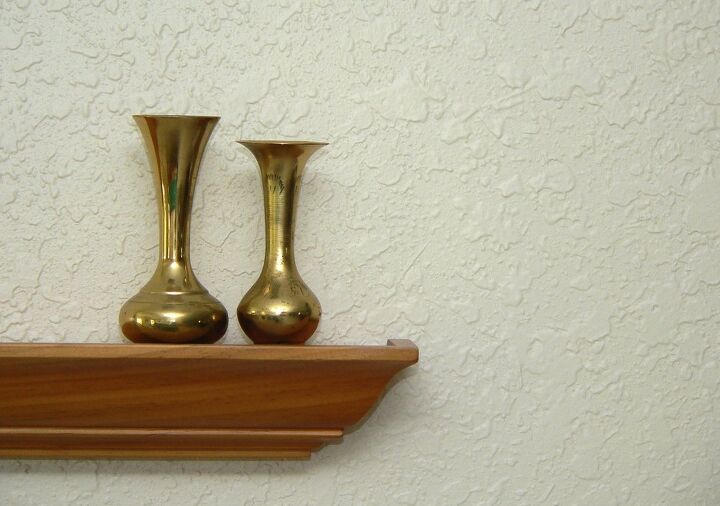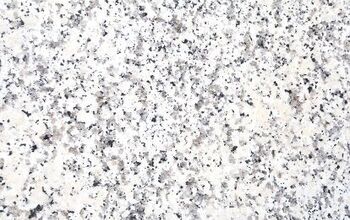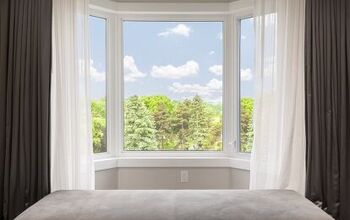Is Knockdown Texture Outdated? (Find Out Now!)

You’ve seen them before—walls and ceilings that look rough, blotchy, and unfinished. What you’ve seen isn’t home deterioration but actually a preferred texture style for walls and ceilings. This texture, known as knockdown texture, has been around since the 1990s, and these days it’s still used in homes and commercial buildings for a variety of reasons.
But is knockdown texture outdated? Such is what we’ll explore in the following sections.
Knockdown texture is thought of as outdated by many property owners, but it still has several qualities that make it both useful and attractive. If you want to add depth to a room, reduce noise, and hide wall or ceiling imperfections, install knockdown texture. But if you’re worried about dating your house, avoid applying knockdown texture, as removing it can be tough.
Do You Need to Hire Drywall Installers?
Get free, zero-commitment quotes from pro contractors near you.

What Is Knockdown Texture?
Knockdown drywall texture came after popcorn and orange peel textures, and these days it’s still preferred for practical and aesthetic reasons. When drywall joint compound is sprayed, troweled, or rolled on a surface, the result is a distinct texture that features static peaks throughout. Once these peaks are flattened with a knockdown knife, a mottled texture is left, one that adds dimension and visual impact to a space.
Some believe knockdown texture and orange peel texture are the same—but they’re not! Whereas orange peel is bumpier and more uniform, knockdown texture is more blotchy. Also, knockdown drywall isn’t only good for aesthetic reasons. It is also used to hide surface imperfections, and as a sound-muting material it’s first-rate.
Kinds of Knockdown Texture
While knockdown texture can be customized to fit the preferences of the installer, there are a few common styles. Each style has its benefits and drawbacks, and it’s best to know for certain which style you want before you begin applying drywall mix.
- Splatter: Preferred for its classic look which resembles Spanish lace stucco, splatter is usually formed with a drywall hopper gun and an 18-inch or wider knockdown knife. Typically 40 percent of the texture is raised while the remaining part is flat. Creating this texture can get a bit messy—especially if it’s on a ceiling—but overall this method is simpler and less demanding than the following two.
- Stomp: This texture is mainly used for its prominence. Of the three textures (splatter, stomp, mud trowel), the peaks of the stomp texture are highest off the main surface. To create this texture, one needs a drywall-water mix, a stiff-bristled crows-foot brush, and a knockdown knife.
- Mud trowel: This texture type is the flattest of the three, and it’s achieved by using a curved-blade trowel. Because the trowel is curved, the mud will skip across the surface, leaving behind round globules that can cover more than 50 percent of the surface. Creating this knockdown texture takes patience, technique, and high-quality materials.
Find out if knockdown ceilings are better than smooth ceilings.
Pros & Cons of Knockdown Texture
Since knockdown texture has remained in style for a couple of decades, it’s safe to say there are a few fundamental reasons why individuals like this drywall style. But, of course, knockdown texture has its drawbacks as well. When determining somethings staying power, one must weigh current pros and cons while also anticipating how future events and developments will change this weighting.
Pro: Adding Dimension & Visual Appeal
If you don’t want a room to look homogenous, you can use knockdown texture to add dimension. If there are four walls in the room, one can be finished with knockdown texture. The accentuation would also look great with a variation in paint.
Knockdown drywall is also an affordable way to accentuate a wall or ceiling in a room, and even painted knockdown texture can’t be ignored. One could also use the “Santa-Fe”, “Skip Trowel”, or “Hawk Trowel” style to add another element of visual appeal.
Pro: Hiding Imperfections
Knockdown texture is a great camouflage, and such is why it’s applied to walls and ceilings that have minor to mild signs of deterioration. Knockdown texture is a way out of frequent repair, repainting, and refinishing.
Of course, knockdown texture should not be viewed as a solution to an abnormal deterioration problem. While more drywall compound is applied to an existing wall or ceiling, this doesn’t mean the addition of knockdown texture provides much reinforcement. To know which ceiling type provides the most security, read this post.
Pro: DIY-Friendly
You don’t have to be a plaster expert to create attractive and sound knockdown texture. Furthermore, one doesn’t need a lot of materials and tools to get the task done. Here are some of the main tools and materials needed to create fabulous knockdown texture, but keep in mind that necessary auxiliary items like tarps, masking tape, and rags are not included below.
- Spackling compound
- Fine-grit sandpaper
- Joint compound powder
- Drywall and knockdown knives
- Drywall hopper gun
Pro: Sound-Proofing
While the additional layer of drywall doesn’t provide much in the way of structural reinforcement, it does serve as an excellent noise reducer. This shouldn’t be relied on as a complete sound-proofing solution, but one would notice a difference in sound quality if they stood between a room with textured walls and a room that lacked them.
Con: Dated Look & Feel
While knockdown texture isn’t regarded as archaic like popcorn and orange textures, there’s a segment of property owners who believe it’s becoming more dated with each passing day. Knockdown texture generally doesn’t blend with contemporary decors well, and this is one reason why it’s becoming less and less common.
One cannot, however, count out the element of creativity. Even though knockdown texture is generally not viewed as a fundamental aspect of modern homes, that doesn’t mean one can’t create a stunning and accentuated knockdown texture in a modern home.
Con: Removal Is Difficult
It’s been said that once you apply knockdown texture, you’re stuck with it. While this isn’t true, it’s no secret that removing textured drywall of any kind is a hassle. Furthermore, one might damage the surface underneath during the removal process.
If you ever have to remove knockdown texture, hire a professional. While creating the texture is a moderately simple DIY task, removing the texture is not. A professional will have the tools, materials, know-how, and experience necessary to safely remove the knockdown texture.
Con: Painting & Cleaning Are Difficult
Textured drywall may have undeniable visual appeal, but cleaning it can be a pain. And if you can’t clean the drywall well, this means painting is out of the question too. Getting a clean wall or ceiling isn’t impossible—it’s just tedious and time-consuming.
Con: Harder to Resell the House
Some home/business owners love knockdown texture and others believe it’s outdated and/or unattractive. Since opinions on this finish vary, adding knockdown texture may create a problem down the road for property owners who are looking to eventually resell. Conversely, you may find a buyer who loves the traditional look and feel of knockdown texture—this is just how things go in the real estate market.
Related Questions
What’s the main alternative to a knockdown texture?
Smooth walls and ceilings are standard while textured surfaces are often considered alternatives. Most home/business owners prefer a smooth surface over a textured one, as the former is sleek, easy to clean and paint, and applicable with a variety of decors. To see which kinds of drywall are out there, read this post.
How much will I spend applying a knockdown texture?
Generally, applying a knockdown texture costs between $1.00 and $2.50 per square foot. On average, texturing a wall or ceiling can cost upwards of $600. The price depends on materials costs, the size of the space being textured, complexity, and the cost of labor.
Is knockdown texture usually painted?
Textured walls are often painted whereas ceilings typically aren’t. Some don’t paint their textured walls because they believe paint diminishes the visual appeal of a textured surface.
Do You Need to Hire Drywall Installers?
Get free, zero-commitment quotes from pro contractors near you.

Final Note
Is knockdown texture outdated? At this point, it should be clear that knockdown texture has good qualities and less attractive ones. But one can’t say with certainty that knockdown texture is outdated. Sure it’s often associated with older homes, but that doesn’t mean individuals aren’t finding creative ways to incorporate textured walls and ceilings in their homes.
Related Articles

Matt loves everything DIY. He has been learning and practicing different trades since he was a kid, and he's often the first one called when a friend or family member needs a helping hand at home. Matt loves to work with wood and stone, and landscaping is by far his most favorite pastime.
More by Matthew Mountain


























![Standard Dining Room Table Dimensions [for 4, 6, 8, 10 and 12 People]](https://cdn-fastly.upgradedhome.com/media/2023/07/31/9074335/standard-dining-room-table-dimensions-for-4-6-8-10-and-12-people.jpg?size=350x220)
